The writer of this article is Arakere Jayaram (in picture), senior journalist and former chief of bureau of The Hindu, Bengaluru.
Jayaram writes:
The following is my response to the article by journalist P.T. Bopanna in Deccan Herald of February 17, 2017, on the question “Are Kodavas, Who Belong To A Unique Race, Hindus?”

I have come across some Kodavas stating that they are descendants of Greeks. To this I have to state that a section of Greek soldiers who had come to India with Alexander the Great remained in India and were assimilated with the local people. There is a Muslim clan or tribe called Awans living in Pakistan’s Punjab province whose members are said to be originally Greeks. They are stated to be genetically different from other Pakistanis. Even here the renowned Pakistani archaeologist the late Dr.Ahmad Hasan Dani differed and had held the view that the Awans were an indigenous tribe. Dalvi who was the first Muslim to graduate from the Benares Hindu University was an authority on Buddhism in Pakistan and Afghanistan. The Awans are to be found around Multan (original name Moolasthana) which Alexander had captured in 327 BC. In fact Alexander was wounded in that battle and it was one of the factors leading to his untimely death at the age of 33 in Babylonia. It is however believed that he fell victim to malaria.
Coming to the main question you have raised whether the Kodavas are Hindus or not, I might say that you are among the first to broach this subject. So far sections of the people of Kodagu District have openly demanded separation from Karnataka and creation of a new State. They want revival of the erstwhile Part “C “State of Kodagu which was a chief commissioner’s province. Nobody, in my understanding, has approached a court of law pleading for declaring the Kodavas as non-Hindus or a religious or linguistic minority (covered by Article 30(1) of the Constitution of India- right of minorities to establish and administer educational institutions). Nor have they approached the courts pleading for protecting their cultural rights (Article 29). Kodavas no doubt have a distinct culture and customs which have to be protected.
So far and after the adoption of the Constitution of India, some of the Hindu castes have claimed minority status under Article 30 mainly to safeguard the educational institutions opened and managed by them. The Kodavas are not into the business part of education.
I might here mention that I distinguish between the words community and caste. In my opinion the first refers to religion or faith and the latter to the castes. Very often people in general and journalists use the two words as synonyms. Communalism and casteism are thus different for me. I am presently placing before you what the courts have said about the minority status demanded by various castes or groups within the Hindu fold.
Are Lingayats non-Hindus?
The Veerashaivas and Lingayats of Karnataka made such a demand when the Devaraj Urs government appointed the L.G.Havanur commission or the First Karnataka Backward Classes Commission. Here again I am of the view that Veerashaivas and Lingayats are different. There were Veerashaivas even before Basaveshwara was born. I am of the view that Veerashaivas are the followers of the five Panchacharya maths located in Balehonnur (Rambhapuri), Ujjini (Bellary District), Kedara (in the Himalayas), Kashi (Benares) and Srishaila (Andhra Pradesh). The heads of these maths do not recognize Basaveshwara and one reason might be because he was born into a Brahmin family. However many scholars are of the view that the two are the same. The name of the federation of Lingayat organizations is Akhila Bharata Veerashaiva Mahasabha.
The Mahasabha then led by the civil servant turned politician, the Late J.B.Mallaradhya made a concerted effort to get minority status for Lingayats. The main reason being, he and the Mahasabha feared that the Havanur Commission would declare them as a forward caste. Mallaradhya, who was a brilliant parliamentarian and sports administrator joined hands with the Brahmins (who had formed the Akhila Karnataka Brahmana Mahasabha) to oppose the Havanur Commission which had said that it would use caste as the main criterion. Both the Lingayats and the Brahmin Mahasabha (headed by a former civil servant P.H.Krishna Rao) raised a hue and cry about the Havanur Commission. Till then Brahmins and Lingayats were traditional rivals. Lingayats had much to gain from non-Hindu status. Their maths are in the forefront in running educational institutions, many of them for profit.
Lingayats had been declared a forward caste by the Dr.R.Nagan Gowda Committee on backward classes set up by the B.D.Jatti government in 1958. There was an uproar against that conclusion of Nagan Gowda who was a US educated Kuruba. A minister in undivided Madras State, Nagan Gowda held a Ph.d degree in Agriculture from the University of Iowa in the United States. He had declared even the Vokkaligas as a forward caste.
Chief Minister Jatti reversed the Nagan Gowda recommendation and continued Lingayats in the other backward class list. The Lingayats and the Vokkaligas were the main beneficiaries of the Justice Sir Leslie Miller committee constituted in 1918. The committee had classified them as also many others as backward.
Dewan Sir M.Kantharaj Urs , brother in law of Maharaja Krishnaraja Wadiyar IV implemented the Miller report and issued the famous GO on backward classes in May 1921. Leslie Miller was the Chief Judge (Justice) of the Mysore High Court those days. He adopted the criterion of five per cent literacy in English among members of a caste to determine backwardness. Of the five member Miller committee, the two Brahmin members submitted dissenting notes. The Miller Committee GO related only to employment in the government and not in the field of education . However the Maharaja’s government instituted scholarships for backward class students as also panchamas (SCs and STs of today).
It was the GO passed by the Jatti government on the basis of the Nagan Gowda report which was challenged in the Supreme Court. In 1963, a bench headed by the then chief justice of India P.B.Gajendragadkar struck down the GO as backwardness had been based only on the criterion of caste. It also placed a 50 per cent ceiling on reservation including those for SCs and STs. The judgment came in the cause célèbre Balaji Vs. State of Mysore.
Chief Minister Devaraj Urs did not heed the Lingayat opposition and declared them as a forward class . The two backward classes commission which followed Havanur- T.Venkataswamy and Justice O.Chinnappa Reddy decided similarly with regard to Lingayats. What more even the Vokkaligas were declared a forward caste.
What the Courts Had Said about Lingayats
It is pertinent to go into what the Bombay High Court had said way back in 1943 about Lingayats and Hinduism. Justices H.V.Divatia and N.S.Lokur (grandfather of sitting Supreme Court judge Madan Lokur) had said that Lingayats are “Protestant Hindus” and rejected the contention that they were non-Hindus. In the case Tirkanagouda Mallanagouda Vs.Shivappa Patil, the Court held that Lingayats are really protestant Hindus having renounced image worship, Brahminical rituals and caste distinctions. But they are believers in one of the Hindu gods whom they worship by means of an emblem if not an image. There can be no doubt therefore that they are subject to Hindu law much more so than the Jains.
The judgment noted that the Privy Council in Somashekara Royal Vs. Sugatar Mahadeva Royal (in 1935) had held that subject to proof of customs to the contrary, Lingayats are governed by the ordinary Hindu law. The case related to the adoption of an illegitimate boy born to a woman in the royal family. (The Royals were the Rajas or zamindars of Punganur in Andhra Pradesh).
In 1964, the Supreme Court held that Lingayats are Shudras. Justice Koka Subba Rao in the case Guramma Bharatar Channabasappa Vs.Mallappa Deshmukh went into the question whether Lingayats are Shudras or Dwijas. Delving into relevant authorities, Justice Subba Rao wrote for the Bench “We are constrained to see what the law by which they are governed ever since the 1879 ruling in Gopal Narhari Safray Vs.Hanumanth Ganesh Safray . They have always been subject to Hindu law as applied to Shudras.
The philosopher statesman and second President of India, Dr.Sarvepalli Radhakrishnan has disagreed with the view that Lingayats are non-Hindus while writing the foreword for the book “History and Philosophy of Lingayat Religion” by Prof.M.R.Sakhare. Sakhare had written that image worship is the religion of the Hindus. If Hindu religion can be so defined, Lingayats are not Hindus. In respect of their worshipping one of the Hindu gods, Shiva, it could be said that worship of a god is no religion. As “Lingayat Religion” has its own philosophy and practices distinct in themselves, “it cannot be a sub religion of Hinduism”. To this Dr.Radhakrishnan wrote that to say that Hindu religion is primarily based on authoritativeness of the Vedas and the Varnashrama Dharma, is a narrow view. Lingayats cannot be called non-Hindus merely because they repudiate distinctions of caste.
Similar was the view expressed by the Privy Council in 1924 in the case Kalya Madappa Vs.Channabasappa.
The Strange Stand of the Ramakrishna Mission
Of greater interest is the contention of the Ramakrishna Mission that it should be declared a non-Hindu organization. The Mission has approached the courts more than once adding to docket explosion. Though everyone says that Swamy Vivekananda held aloft the greatness of Hindu religion to the world at large through his speech and interactions at the 1893 Parliament of Religions held in Chicago (US), the Ramakrishna Mission had contended before the Supreme Court in 1995 that Vivekananda founded a new religion. He was no doubt an aggressive Hindu monk when he went to Chicago. “But on return he became a preacher of a religion basically different from Hinduism”.
The Supreme Court has told the Ramakrishna Mission more than once that “You are Hindus”. A three judge Bench of the Court in “Brahmasri Sidheshwar Sahai Vs.State of West Bengal made it clear that the Mission was not entitled to fundamental rights under Article 30( 1). In the case which is better known as the Ramakrishna Mission case, Judges Kuldip Singh, N.Venkatachala (former Lokayukta) and S.Saghir Ahmed set aside a judgment of the Calcutta High Court which had held that the R.K.Mission was a minority in West Bengal based on religion. The Mission belonged to a religion which was distinct and separate from Hindu religion, the High Court had said.
To this the Supreme Court said that the RK Mission established by Swami Vivekananda to propagate Vedanta values as expounded by Ramakrishna Paramahamsa “is not a minority religion separate and distinct from Hindu religion. It is a religious sect or denominaton of Hindu religion and therefore not entitled to claim the fundamental right under Article 30(1) of the Constitution relating to establishment and administration of educational institutions of their choice. “Sri Ramakrishna could be regarded as a religious teacher who expounded, practised and preached the principles of Vedanta on which Hindu religion is founded.
The Supreme Court upheld the 1995 judgment in 2011 in the case Bholanath Mukherjee Vs.R.K.Mission Vivekananda Centenary College speaking through Judges Sudarshan Reddy and Surinder Singh Nijjar. Strangely in this case the Mission had pleaded that the Mission be declared as non-Hindu in matters of religion. But it wanted its members to be treated as Hindus or semi-Hindus in the matters of marriage and inheritance! It was clear that the Mission wanted to escape discrimination against Hindus in the matter of education.
It has been rightly said that there is no legal definition of the word Hindu under the Constitution. No doubt the Supreme Court has said in one of its judgments that “Hinduism is a way of life”. “Under the pretence of secularism” the Constitution allows Muslims, Christians and Parsis to have separate personal laws. Article 25 (2) has been described as an example of a credibility deficit in the matter of Indian secularism. While the main Article deals with freedom of conscience and free profession, practice and propagation of religion, the sub Article prohibits the State from regulating or restricting religious practices- wearing and carrying of kirpans by Sikhs for example.
However, sub clause (2) of the same Article relates to personal laws. It says that reference to Hindus shall be construed as including reference to persons professing the Sikh, Jaina or Buddhist religion. It has also been interpreted to mean a person who is a Hindu by religion or in any of its forms “including a Veerashaiva, a Lingayat or a follower of the Brahmo, Prarthana or Arya Samaj”.
When the Hindu Code Bill was introduced in the interim Parliament in 1951 by the then Union Law Minister Dr.B.R.Ambedkar, Sardar Hukum Singh dubbed it as a dubious attempt on the part of the Hindus to absorb Sikhs. Ambedkar told him that the application of the Hindu code to Sikhs, Buddhists and Jains was a historical development and it was too late “sociologically” for the Sikhs to oppose it. Hukum Singh later joined the Congress and became Speaker of the Lok Sabha. One reason as to why Ambedkar embraced Buddhism was that he did not want to convert himself to an alien or non-Indian religion like Christianity or Islam. Even in the days of the East India Company, the Privy Council had held in 1830 that Sikhs were governed by Hindu personal laws.
In the Central Legislative Assembly an authority on Hinduism Sir Hari Singh Gaur had called the Jains as Hindu dissenters.
In 1984, Justice Ranganath Misra of the Supreme Court held that the Anandi Margis were a Hindu denomination.
Another Hindu reformist movement which wants to be regarded as non-Hindu for convenience is the Arya Samaj. In the case, DAV College, Bhatinda Vs.State of Punjab the Supreme Court held that the Arya Samaj is part of Hinduism and not a separate religion. It is a vigorous reformist sect. Dayanand Saraswathi founded an organization –Arya Samaj and not a religion. DAV stands for Dayanand Anglo-Vernacular.
As a footnote I might mention the type of pseudo scholars from the West who have influenced the minds of gullible Indians even to this day through the comment of a Christian missionary who is highly regarded by the Dravida Kazhagam in Tamil Nadu. Bishop Robert Caldwell had called “Brahmins the cunning Aryan agents”. Caldwell and another missionary G.U.Pope stand on pedestals (statues) on the Marina Beach in Madras. While not questioning the great scholarship and contributions of Dr.Friedrich Max Mueller, it could be said that it was he invented the “Aryan Invention Theory” in his magnum opus “The Holy Books of the East”. Max Mueller wrote on India and the Vedas without ever visiting our land!


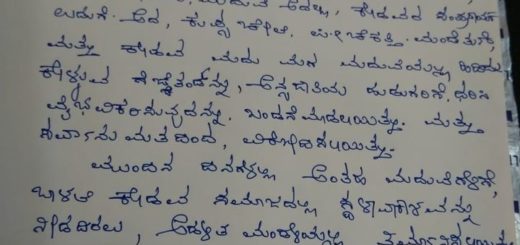
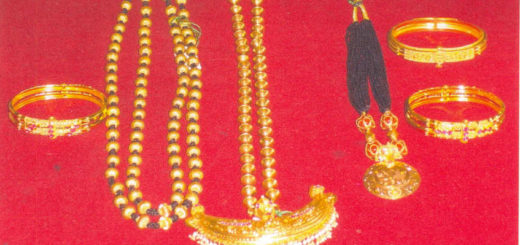
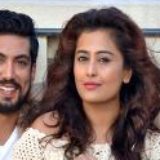
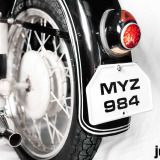
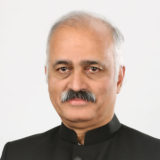
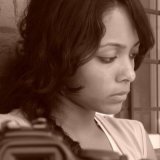
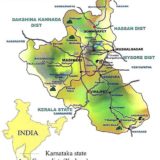
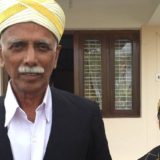
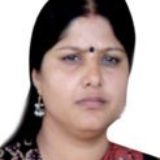
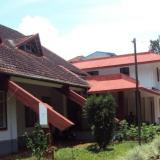
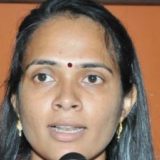
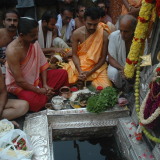
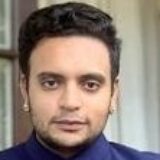
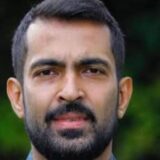

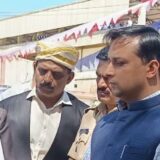

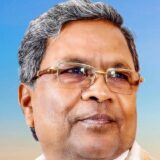
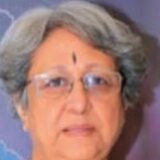
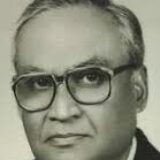
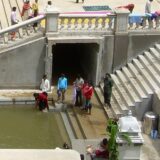
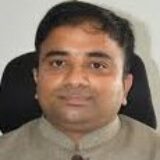

Codavas are neither Negroid race, Mongoloid race, Dravidan race, nor Aryan race. Neither we are a Kannada linguistic group, nor we affiliated to any faiths. We belong to an entirely different and unique nationality. ie.. ‘Codava ethno-cultural group’.
There is no sect or sub sects in Codava race. Codavas do recognise the existence of more than nine hundred clans and every clan has an individualistic existence of its own. In Codava nationality each Codava clan/ Khandan/ Lineage /Okka are linked with each other like a long chain. Codava nationality has got different clannish names which are similar to those like gothras of Hindus. Just like Hindu gothras, marriage is prohibited within the Codava Clan.
Codavas are ancestral worshippers, but it does not mean that we restrict any Codava individual adopting – any tenets and practices of any religion of his own personal choice; It is true that the old historians and people of letters, not to mention the fact that the governmental organs, for convenience sake included Codavas under general terminology of Hindu religious group, and Kannada linguistic group.
It is a pity that we Kodavas have been very naïve in believing non-Kodavas to educate us about who we are! Can we not decide ourselves who we are? I consider that we are the only tribe in India without schedule status because of our better education and financial status.
This author has admitted that “Kodavas no doubt have distinct culture and custom which have to be protected”. But, how, he has not mentioned. We do not believe in caste system; instead we believe in Okka system. We have our own language which is Indo-Iranian in origin and not Dravidan. We perform our rituals ourselves and do not depend on Hindu priestly class. We have our own dress, which is unlike those of our neighbours. Our weapons like Odi Kathi and pichekathi are different in design. Our jewels are of different design.
We have our own temples called Kaimada. We consider Nature (sun, Moon, earth water etc as our God and treat our elders as our Guru). We need to get Minority status under the Constitution and special status for Kodagu which is our sacred homeland where we have our Ain Mane (ancestral House), Kaimada (temples) and our Jamma Land. The problem is we are small community and prone to exploitation, which is going on since Kodagu merged with Karnataka in 1956.
The article is thought provoking. In fact all people who are not indoctrinated into dogmatic religions, (Christianity, Islam, Sikh, Jain etc. who have there own dicta/s or codes) and living in Indian Nation, the unclassified masses, are Hindus. This broad designation covers even the tribes of Andamans who live in isolation in remote islands, who may not have any inkling of what the Vedas are or have not heard any stories of Ramayana and Mahabharatas. If at all Hindus have doctrines and dogmas there is a multiplicity of them, one merging into the other and even encompassing tribal faiths into one wide fabric which can extend and cover any one who is otherwise unclassified. All these are already included technically Hindu castes and tribes (all original natives of the subcontinent and theri descendents). The faiths of Hindus, widely accepted ones, or restricted to some tribes in remote mountains of, may be Arunachal, are classified as Hindus. Such faiths are in thousands, their gods different, yet the Hindu nation want to achieve unity in diversity. The caste hierarchies remain a big enigma and a major blot on the society; it is more creation of selfish groups and is against the basic ethos of the country, which welcomed through ages every group to be assimilated in the country. It is not army or police that knit together the nation, but the mutual respect for each other’s faith and seeking linkages of faiths withi a complex fabric. The Kodavas or Lingayats, in my opinion, cannot claim status as unique groups or religion. Let us not be more divisive in thinking.
I am a lingayat, not a VeeraShiva, follow Basava Thatva, I believe that the Kodavas must be accorded a scheduled tribe status, and going by the arguments why Lingayats are not Hindus, Kodavas can also be considered non Hindus.